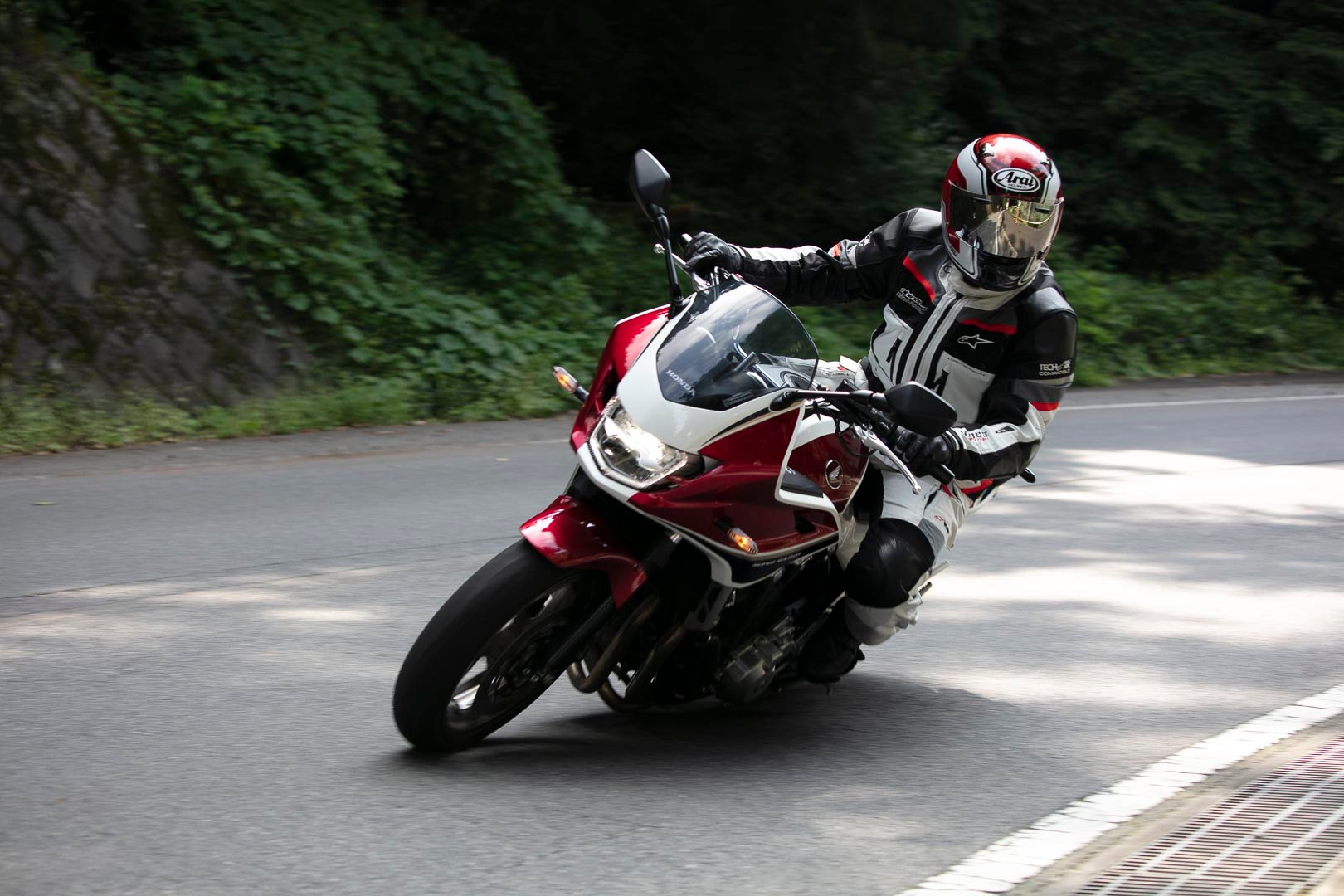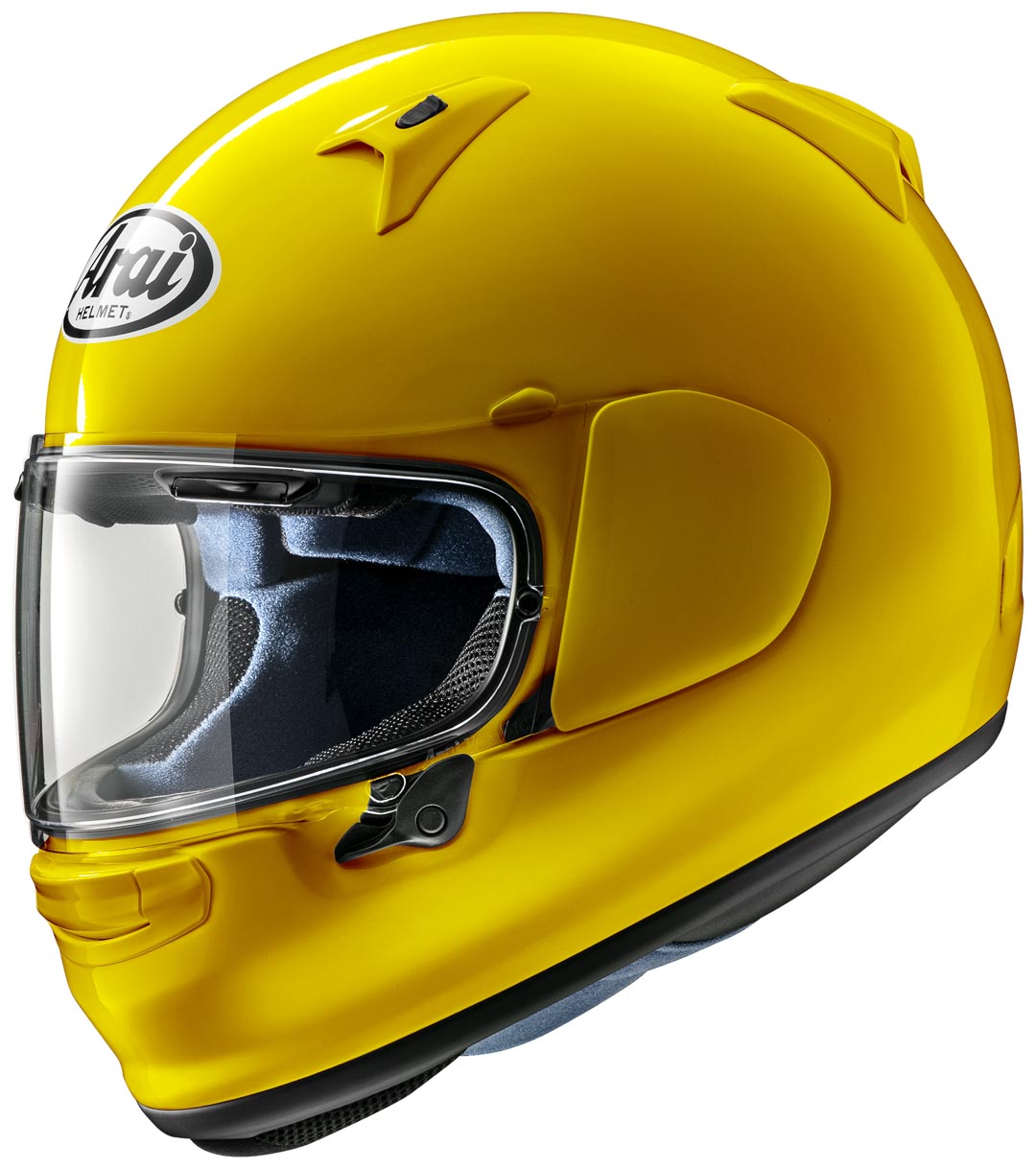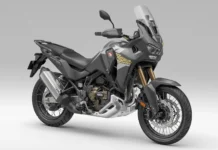Arai Regent-X Test
You know, sometimes you must give credit where credit is due, and this time around, Arai is on the receiving end of an approving nod and a golf-clap from yours truly. You see, the job of a helmet manufacturer is a tough one.
You need to create a whole multinational conglomerate from nothing, build a legacy based on your stringent quality control processes, bring competitive products to market, be a leader, and then you must sit back and let the cacophony of critiquing that is the market ring out.
 Well, not every helmet manufacturer does that, but that’s what Arai did and how we got here with the new Arai Regent-X all-around street helmet.
Well, not every helmet manufacturer does that, but that’s what Arai did and how we got here with the new Arai Regent-X all-around street helmet.
Arai waded through e-mails, phone calls, social media comments, dealer feedback and even listened to people at tradeshows (I hope they washed their hands) before designing the Regent-X with a specific goal in mind—more comfort when taking the helmet on and off.
The cries of pain were heard from their customer base, “Our beloved Arais can fold our dainty ears when we’re pulling our helmets on, whatever shall we do?!” and like a bright, sparkling animated superhero, Arai engineers heard the call of their constituents, widening the Hyper Ridge in the chin and cheek area by 5mm to easily make it the most comfortable lid I’ve ever applied to my dome.
For Arai faithful, the Hyper Ridge, or rather the slightly enlarged band around the base of the shell, is a familiar feature that’s been around for quite some time. Its original purpose was to widen the entry point of a helmet. However, there were a couple of unintended side effects. It made the helmets more aerodynamically sound and increased their strength, making it something of an engineering win-win.
Strangely, I seem to be in the minority with this complaint, as I’ve never felt this way about any Arai. The race-ready Corsair-X, with its much narrower opening and race-fit, is probably one of the most accessible track helmets to put on. I also enjoy leather, uncomfortable positions, and soreness—get your mind out of the gutter. I’m talking about sport bikes!
Of course, the Regent-X doesn’t disappoint with its egg-like R75 Arai profile, which Arai engineers feel gives the rider the best chances when involved in an accident. The smooth profile is meant to avoid direct impact by glancing blows and allowing the helmet to slide freely. There aren’t any flat surfaces for the helmet to seize on.
 There were a few other goals with the new lid as well, mainly, getting more riders in Arais. The Regent-X replaces the DT-X, Arai’s former entry-level full-face helmet. Comparing them side by side, the Regent is undoubtedly offering up more for less, so you might want to think twice about tipping the 40 oz. just yet. With MSRPs of $560 for solid colors and $690 for graphics, the Regent-X is the least expensive full-face helmet in the Arai lineup. However, they didn’t skimp on the top-shelf fit and finish.
There were a few other goals with the new lid as well, mainly, getting more riders in Arais. The Regent-X replaces the DT-X, Arai’s former entry-level full-face helmet. Comparing them side by side, the Regent is undoubtedly offering up more for less, so you might want to think twice about tipping the 40 oz. just yet. With MSRPs of $560 for solid colors and $690 for graphics, the Regent-X is the least expensive full-face helmet in the Arai lineup. However, they didn’t skimp on the top-shelf fit and finish.
Let’s begin with the exterior and work our way inside. The Regent-X uses Arai’s Peripherally Belted Complex Laminate Construction 1 (PBcLc1) or, in layman terms, a laminated fiberglass shell. The ‘1’ refers to the recently updated resin compound that claims to improve performance in testing. It is a more affordable material than the Superfiber shells that you’ll find in the Signet-X, Quantum-X, and Corsair-X, but the Regent has a substantially lower price.
You might not be getting the fancy-schmancy Superfiber shell, but that doesn’t mean you should worry about protection. The Arai Regent-X is still DOT and Snell M2020 compliant, and it passes those tests by a mile. The peripheral belt is a Superfiber weave above the viewport of the lid. It is there to bolster the integrity of a helmet in the event of a crash.
All Arai shells are made with what they’ve dubbed as a ‘random strand’ process by spraying fiberglass onto a head-form. Look at the image of the bare shell. It appears to be porous with fibers going every which way. That’s because those fibers are applied in a completely random way. It has a few benefits, but one of the big ones is reducing the amount of material needed in a shell. Less resin is used with this technique, without sacrificing strength. In turn, the shells end up being stronger and lighter.
This technique claims to help impact absorption by distributing energy in every direction. Arai says it is a superior alternative to helmets that use strips of fiberglass or sheets of fiberglass, as those have consistent weave patterns. That means that they’ll often show damage focused along the paths of least resistance—energy is more likely to get focused in one area. Arai’s goal is to divert that shock in every direction to lessen the blow.
 Beyond that, Arai shells are handmade from start to finish. They also have a multi-step quality control practices in place to ensure that the consumer, as well as professional racers, are getting the best of the best. Want an idea of how serious they are about QC? The shells are inspected multiple times, and they get their final verification at a plant that’s two hours away from their main manufacturing facility to make sure that the inspectors and makers are entirely isolated from one another.
Beyond that, Arai shells are handmade from start to finish. They also have a multi-step quality control practices in place to ensure that the consumer, as well as professional racers, are getting the best of the best. Want an idea of how serious they are about QC? The shells are inspected multiple times, and they get their final verification at a plant that’s two hours away from their main manufacturing facility to make sure that the inspectors and makers are entirely isolated from one another.
Moving to the interior, Arai’s multi-density EPS liner is handmade. Each color band represents a different density and Arai engineers strategically place the various densities in the areas needed most—high-risk areas have harder densities to absorb the main brunt of an impact, whereas other areas use slighter densities.
Now, here is where the Arai Regent-X stands out against the Arai lineup and the competition—comfort. The velvet-like fabric interior is as inviting as an Arnold Palmer on a scorching day, the cool side of the pillow, or fresh-baked apple pie. The list of pleasant things can go ad nauseam, but the Regent-X is easily the comfiest lid in the stable as of now. Of course, the material is sweat-wicking and anti-microbial, too.
Featuring another familiar acronym, the Facial Counter System cheek pads have sizes ranging in 15mm, 20mm, 25mm, 30mm, and 35mm. Arai didn’t incorporate the ‘peel away’ foam that allows users to customize their fit to absolute perfection with the Regent-X, but you’ll have a decent amount adjustment. That said, the padding itself is ridiculously plush, yet supportive, keeping the helmet from bobbling in the wind or otherwise when cruising at pace. The pads also accommodate speakers for communications devices. Taking the pads out is a cinch should you need to wash anything or make some adjustments.
As a cost savings measure, an emergency quick release system is not incorporated into this helmet. Hopefully, on future generations of the Regent-X, we’ll see that come into play.
If you wear glasses, Arai does have a channel in the cheek pads to accommodate my four-eyed brethren. Arai is one of the few manufacturers that take pity upon my people, and for that, I’m thankful.
 It’s a similar story for the perimeter padding, and owners have between two or three thickness options, depending on the shell sizes. S, M, and L have three padding thicknesses to choose from, while XS, XL, and XXL only have two. Also, the neck roll has been redesigned to shave a bit of weight.
It’s a similar story for the perimeter padding, and owners have between two or three thickness options, depending on the shell sizes. S, M, and L have three padding thicknesses to choose from, while XS, XL, and XXL only have two. Also, the neck roll has been redesigned to shave a bit of weight.
When it comes to vision, Arai has you covered with one of the most expansive viewports in the industry. There is excellent peripheral vision in the Regent-X, letting you see more when on the streets or keeping your eyes on the apex. It was a massive help while riding the tight, narrow, canyon roads of the Japanese countryside where I did my initial testing of the helmet.
Arai has transitioned to the Vas-V faceshield system, which is a massive improvement over the previous generation. Still, you’ll be keen to notice the two small vent-inlets, as Arai does not want to sully the shell or EPS liners with further cuts and instead, used an already structurally comprised area of the helmet to let in air.
Installing the faceshields isn’t necessarily intuitive, but once you know the sequence, it can be done in seconds. Instead of trying to explain it, check out this video from Arai Americas and you’ll be swapping out visors like a champ in no time. We should also note that these faceshields are shared between helmets, and I’ll always commend a manufacturer for not making consumers buy another shield for another helmet.
The single complaint I have about this lid is the locking mechanism. Flopping the shield down easily locks it into place—there are no gripes there. What is a problem for me is lifting it, and I have about a 50 percent success rate. Hitting the lever unlocks the faceshield and crack it open, which is quite handy when you need to get a bit of air in traffic. However, the final motion means you must scoop up with your thumb and lift the shield. Arai faithful can do this with all the dexterity of a Russian ballet superstar, while I perform it as I perform ballet—badly.
 In terms of ventilation, what you have on hand is more than adequate. For those used to the airy feel of a Corsair-X, I wouldn’t say it’s on par with that, but it does well. There’s a sizeable chin-bar vent, two faceshield vents, and two vents on the forehead, all of which are easily operated with a gloved hand. In the rear, five always-open vents helm move air. Those same vents are also designed to break away when contacting the ground to reveal the smooth, egg-like shell profile beneath.
In terms of ventilation, what you have on hand is more than adequate. For those used to the airy feel of a Corsair-X, I wouldn’t say it’s on par with that, but it does well. There’s a sizeable chin-bar vent, two faceshield vents, and two vents on the forehead, all of which are easily operated with a gloved hand. In the rear, five always-open vents helm move air. Those same vents are also designed to break away when contacting the ground to reveal the smooth, egg-like shell profile beneath.
Popping these vents open was an absolute must when riding local Hondas in the hot and humid weather of a Japanese summer. Having glasses is my version of a canary in the coal mine; a helmet with poor venting have my lenses fogging up so fast it’ll be like I’m standing in front a plate of free cookies. Luckily, that didn’t occur.
Even in heavy rain, there wasn’t noticeable seepage and trust me, the storm we saw in the Land of the Rising Sun was epic. As a cost-savings mechanism, PinLock shields are not provided. However, all the faceshields are PinLock-compatible.
Finally, a classic double-D ring strap secures everything in place. Fun fact, if you want to check the manufacturing date of your helmet, look etching on the D-ring for the month and year.
Available in a full range of sizes, I expect the Regent-X to attract some more customers to the Arai family. It is the most affordable option in the Arai lineup, but that’s like saying you just picked up a base model Superbike or that your spouse is a former centerfold—don’t be modest.
 As always, have the helmet fit by a trained professional in a motorcycle shop. You don’t want a helmet that is too tight or too loose, and not all helmets fit all heads. Arai describes the Regent-X as an intermediate oval.
As always, have the helmet fit by a trained professional in a motorcycle shop. You don’t want a helmet that is too tight or too loose, and not all helmets fit all heads. Arai describes the Regent-X as an intermediate oval.
When you boil it all down, the Regent-X is quite the little gem for Arai. It has all the aspects that we’ve come to appreciate the brand in terms of fit and finish, quality, safety, and more, but with a lower introductory price.
For those that need a solid full-face helmet ready to handle the rigors of everything short of the track, the Regent-X is an excellent choice.
Special thanks to Honda Japan for providing motorcycles during our Arai Helmet factory tour and Regent-X test.
Arai Regent-X Fast Facts
- Sizes: XS-XXL
- Shape: Intermediate oval
- Colors: Sensation Yellow; Sensation Red; Sensation Blue; Red; Code Yellow; Black Frost; Gun Metallic; Modern Gray; White
Prices: $560 (solids) and $690 (graphics) MSRP
Get the Gear You See Here at MotoSport.Com!























![2024 Suzuki V-Strom 800 Touring First Look [Fast Facts + Photos] 2024 Suzuki V-Strom 800 Touring First Look: MSRP](https://ultimatemotorcycling.com/wp-content/uploads/2023/10/2024-suzuki-v-strom-800-touring-first-look-3-218x150.webp)
![2023 Motocross of Nations Results, Video [France Dominates] 2023 Motocross Of Nations Results](https://ultimatemotorcycling.com/wp-content/uploads/2023/10/2023-motocross-of-nations-start-218x150.jpg)

